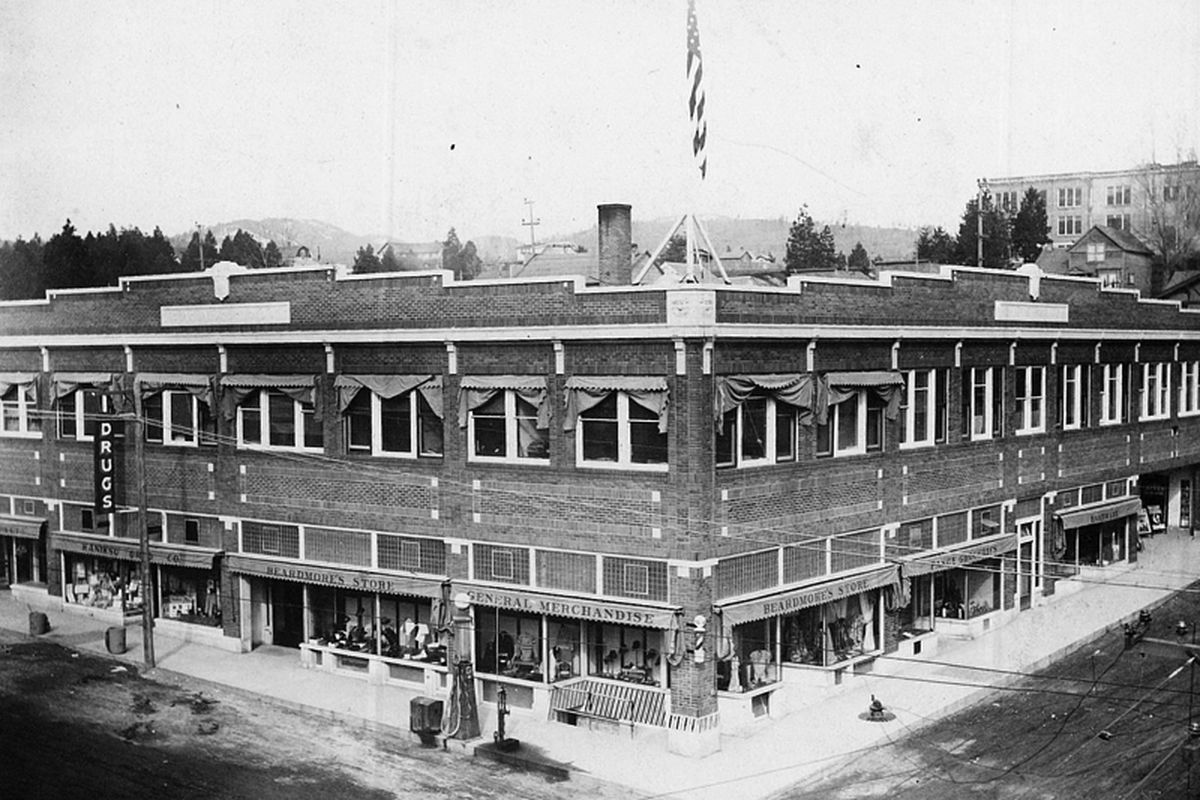Architect restores his family’s legacy

In 1923 Brian Runberg’s grandmother, Vivienne Beardmore McAlexander, celebrated her 18th birthday at the grand opening of the Beardmore Block in downtown Priest River. The building was owned by Vivienne’s father and Runberg’s great-grandfather, Charles Beardmore, who the previous year had commissioned prominent architects Whitehouse and Price to build the structure for Beardmore’s timber and mining businesses.
According to Runberg, soon after Beardmore became Bonner County’s largest employer and the building an important piece of Priest River’s history.
“My grandmother sold the building in 1972,” said Runberg. Then in 2006, Runberg, a Seattle-based architect and a graduate of the University of Idaho, found out the building was for sale again. He arranged a visit.
“I was absolutely horrified at the condition it was in,” he said. Water damage and vandalism had taken a toll over the years. “I knew something had to be done quickly, otherwise it would be under the wrecking ball.”
Determined to rebuild that which his great-grandfather worked so hard to create, Runberg decided to buy the building and began renovating it.
“I remember running around in it (the Beardmore Block) when I was little,” said Runberg, 44, who had not been inside in nearly 30 years, until the 2006 purchase.
He said his great-grandfather built the Beardmore Block because he believed in the future of North Idaho – a sentiment echoed by Runberg.
“I’m preserving and restoring it for those very same reasons,” he said. “The building was his (Charles Beardmore’s) final legacy, so it is very important to me.”
Now, nearly 90 years after the Beardmore Block first opened, Runberg has been honored for his work in the renovation. In early July, he attended the Pacific Coast Builders Conference in San Francisco, where he was presented with the Grand Award for Adaptive Re-use. The conference acknowledges architectural and construction excellence throughout the Western United States.
“The (Beardmore Block) project serves as an important precedent for the region that historic buildings can be preserved in an appropriate way,” said Runberg, who relied on his personal memories as well as the many stories his grandmother shared with him to help maintain much of the integrity of the building.
The Beardmore Block is on the National Register of Historic Places and is one of only five buildings on the Register nationally that also hold LEED Gold certification.
To qualify for LEED (Leadership in Energy and Environmental Design) Gold certification, nearly everything coming out of the building during remodeling must be recycled, Runberg said. In the case of the Beardmore Block, more than 95 percent of the original structural material has remained in the building. Also, more than 50 percent of the nonstructural material, including most of the wood, was used in the renovation.
Judges at the conference noted that the renovation of the Beardmore Block was a great example of how preservation of existing features can be integrated with sustainable design strategies.
Runberg said the building was torn down to the studs. The roof was rebuilt to drain to a reservoir in the basement, which in turn provides for all of the tenants’ nondrinkable water needs. Also, in a climate like North Idaho’s, efficient heating is important. Runberg installed new insulation that dramatically increased the thermal efficiency of the 86-year-old building and also used energy-efficient light fixtures. Renewable energy from photovoltaic cells also contributes to the use of green technology.
“As a result,” said Runberg, “the Beardmore Block is 40 to 50 percent more efficient than a new building built today with current energy standards.”
Additional strategies Runberg implemented to maintain much of the original materials were to reconstruct the original window frames to hold thermal glass and to reconstruct original plumbing fixtures to reduce water use.
“Using green technology is the most appropriate approach, not only for new construction but also renovations,” said Runberg, who adds that it is also proving to be cost-effective. “When carefully planned and executed it does not take that much more cost or effort and the benefits will be for generations to come.”
He said the green technology is a pioneering approach for a new era. Nearly 90 years ago his great-grandfather sought a similar pioneering spirit to build the landmark.
Runberg said that while the award is an honor, what excites him most is the reopening of the Beardmore Block contributes to the rebirth of Priest River, where the economy has been hard hit by the decline of the timber industry.
The Beardmore Block is “the kingpin of the Priest River downtown historic core,” said Don Watts of the Idaho State Historic Preservation Office. “It’s a great example of early 20th-century architecture and design.”
The building has attracted tenants including a wine bar that occupies the first floor, an engineering firm, a financial consulting firm and a tax accountant. And for the first time in years, there are parking issues in downtown Priest River – a problem that puts a smile on the faces of many residents.
“It’s exactly what my grandparents would have wanted,” said Runberg.